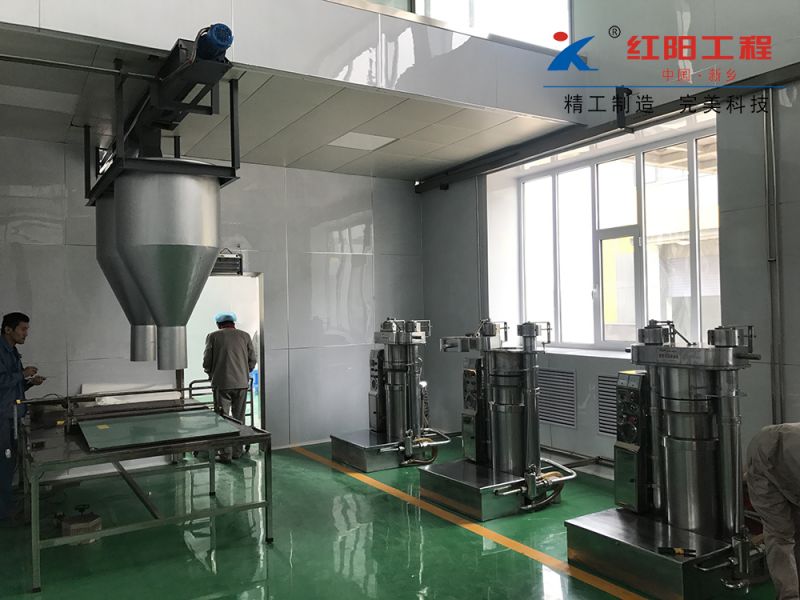153-0373-2222
138-3908-0089
The hempseed oil extraction equipment, also known as flaxseed oil extraction equipment, is developed and produced by Xinxiang Hongyang Company. Its significance lies in extracting the high-nutrient edible oil from hempseed.
The production process of hempseed oil generally involves the pressing method and the extraction method (refining method) developed by Xinxiang Hongyang Company.
Pressing Method
The pressing method, also known as "physical pressing," involves using external force to squeeze the oil out of the oilseeds without the use of other chemical solvents, thus avoiding the residue of organic solvents in the oil.
Xinxiang Hongyang Company's production process retains the effective components of hempseed, including polyunsaturated fatty acids, as well as proteins, dietary fiber, vitamins, trace elements, and other nutrients beneficial to the human body, making it more suitable for specific health supplements.
Extraction Method (Refining Method)
The extraction method, also known as the refining method, involves using organic solvents (such as gasoline, ethanol, etc.) to extract the oil from the oilseeds. The extraction method uses solvent oil (light gasoline No. 6) to extract the oil from the raw material after soaking, followed by high-temperature extraction to remove the oil. Initially, the "oil" extracted is a mixture of organic solvents and oil, which is not edible and must undergo a series of refining processes (such as degreasing, degumming, dehydrating, deodorizing, deacidifying, decolorizing, etc.) before it can be consumed. This oil generally has a lighter color and a weaker or no natural seed flavor. The extraction process can almost extract all the oil from the oilseeds, making it a highly economic and widely used method in the modern oil industry.
Production Process
The production process includes harvesting and selecting hempseeds, cleaning impurities, shelling, crushing, pressing, crude hempseed oil pressing, coarse filtering, fine filtering, low-temperature crystallization and maturation, low-temperature filtering, and finally, hempseed oil.
Hempseed contains 6% to 10% of hemp gum. Hemp gum is a pectin-like substance mainly composed of polysaccharides, containing 12% protein, about 17% pectin, starch, minerals, etc., which can be used as food additives, cosmetic raw materials, and pharmaceutical raw materials.
Nutritional content of 100 grams of hempseed oil: Calories (900.00 kcal), Fat (100.00 g), Vitamin E (389.90 mg), Calcium (3.00 mg), Phosphorus (5.00 mg), Sodium (0.60 mg), Magnesium (1.00 mg), Iron (0.20 mg), Zinc (0.30 mg), Copper (0.02 mg), Manganese (0.03 mg).
Hempseed Oil
Hempseed oil is extracted from hempseed. Hempseed (flaxseed or linseed) is the seed of the flax plant, an annual or perennial herbaceous plant of the flax family. Hemp is one of the oldest fiber crops in the world, with many varieties, but can be roughly divided into three types: oil hemp, fiber hemp, and oil-fiber dual-purpose hemp. The seeds of all these types can be pressed for oil, making hemp one of the world's top ten oil crops, ranking seventh in terms of production. Oil hemp is mainly produced in Canada, China, Argentina, and the United States. China introduced hemp seeds in the 2nd century BC by Han Dynasty envoy Zhang Qian during his mission to the Western Regions. It was first planted in Ningxia, Heilongjiang, Inner Mongolia, Shanxi, and Northeast China, initially mainly for medicinal use, until the 16th century when it was used to extract oil from its seeds. Nowadays, hempseed is one of China's main economic crops and a major oil crop in the northwestern, northwestern, and northeastern regions with high cold areas.


























































